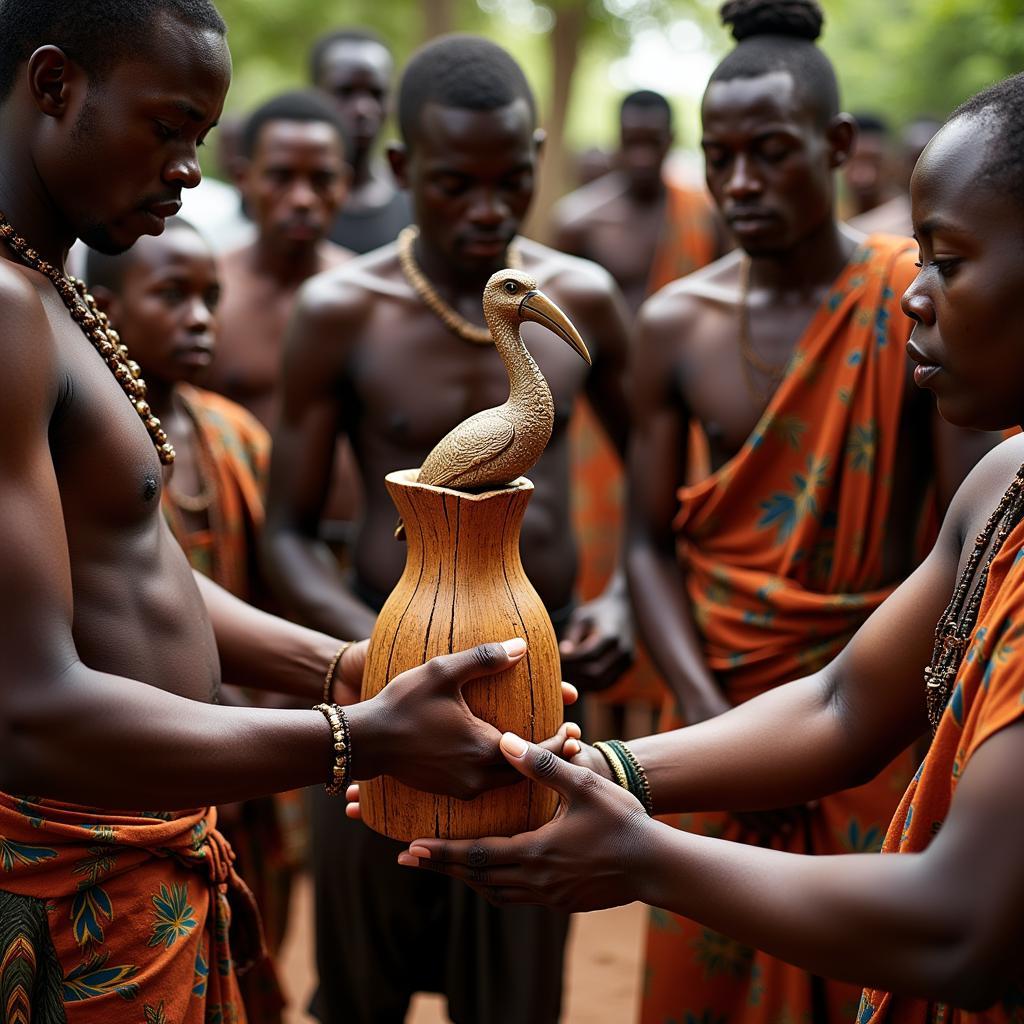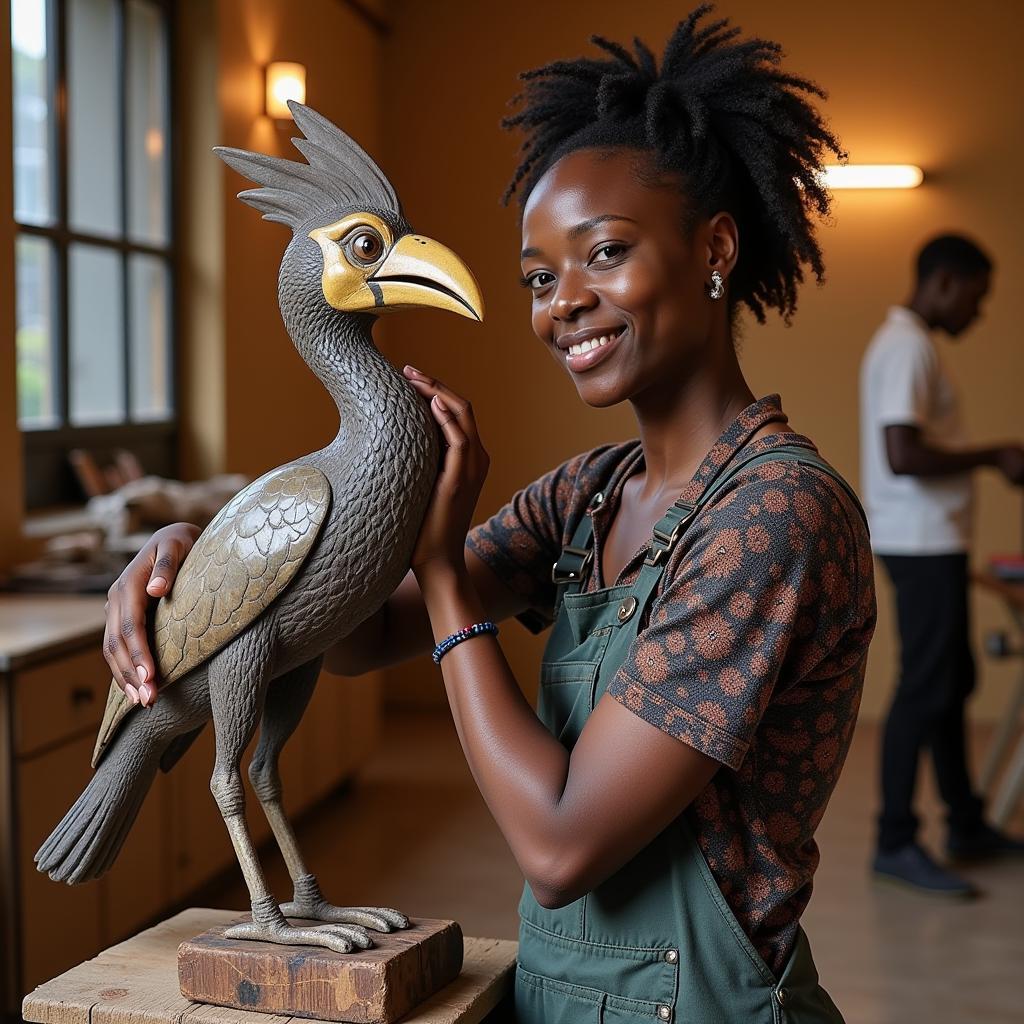African Hornbill Vessel: A Modern Glimpse into Ancient Traditions
The African hornbill vessel, a striking example of artistry and cultural significance, continues to captivate art enthusiasts and cultural explorers alike. These intricately carved vessels, often featuring the iconic hornbill bird, offer a unique window into the rich history and traditions of various African cultures.
 African Hornbill Vessel Used in Traditional Ceremony
African Hornbill Vessel Used in Traditional Ceremony
The Hornbill’s Significance in African Culture
Across many African societies, the hornbill holds a place of profound symbolic importance. Often revered for its striking appearance, distinctive call, and unique nesting behaviors, the hornbill is often associated with:
- Spirituality and Ancestors: The hornbill’s ability to soar to great heights links it to the spiritual realm and communication with ancestors.
- Royalty and Power: The bird’s prominent beak and impressive size often signify strength, leadership, and social standing.
- Fertility and Prosperity: The hornbill’s dedicated parenting and resourcefulness symbolize abundance and well-being.
The Art of Crafting Hornbill Vessels
Traditionally, African hornbill vessels are meticulously crafted from various materials, including:
- Wood: Skilled artisans transform hardwoods like ebony and mahogany into stunning vessels, highlighting the natural beauty of the wood grain.
- Horn: The hornbill’s beak, prized for its unique texture and durability, is carefully shaped and polished into elaborate containers.
- Metal: In some regions, metals like bronze and brass are cast and intricately decorated to create exquisite hornbill-shaped vessels.
The creation of a hornbill vessel is a laborious process requiring generations of knowledge and skill. Artisans often employ a combination of carving, sculpting, and embellishing techniques to achieve the desired forms and intricate details.
Modern Uses and Interpretations
While rooted in ancient traditions, African hornbill vessels continue to hold relevance in contemporary African societies and beyond:
- Ceremonial Objects: Hornbill vessels are still utilized in various ceremonies and rituals, serving as vessels for offerings, libations, or sacred objects.
- Symbols of Cultural Heritage: These vessels are proudly displayed in homes as cherished heirlooms and powerful reminders of cultural identity and heritage.
- Art Collectibles: The artistic merit and cultural significance of African hornbill vessels have made them highly sought-after collectibles among art enthusiasts worldwide.
 Contemporary African Artist with Hornbill Sculpture
Contemporary African Artist with Hornbill Sculpture
Preserving Tradition in a Changing World
As with many traditional art forms, the art of crafting African hornbill vessels faces challenges in a rapidly changing world. However, numerous initiatives are underway to:
- Support Local Artisans: Organizations and individuals are working to provide platforms for artisans to showcase and sell their work, ensuring fair compensation and sustainable livelihoods.
- Promote Cultural Awareness: Museums, galleries, and cultural institutions play a crucial role in educating the public about the historical and cultural significance of these unique artifacts.
- Encourage the Next Generation: Mentorship programs and workshops aim to pass down traditional carving and crafting techniques to younger generations, ensuring the continuity of this rich artistic heritage.
The African hornbill vessel serves as a powerful reminder of the enduring connection between art, culture, and history. By appreciating and supporting the artisans who dedicate their lives to preserving these traditions, we contribute to the continued celebration and understanding of Africa’s rich cultural tapestry.



